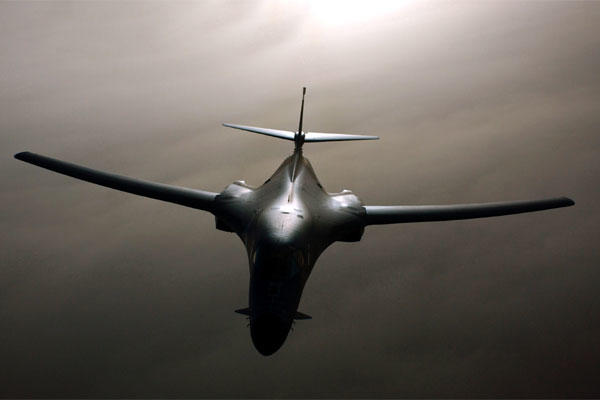U.S. fighter jets, bombers and armed drones carried out their heaviest airstrikes Monday in the current air campaign in northern Iraq, hitting targets around the Mosul Dam in the widening effort to degrade Islamic State of Iraq and the Levant (ISIL) forces.
For the third consecutive day, the mix of warplanes conducted 15 airstrikes, following the 14 on Sunday and nine on Saturday, U.S. Central Command officials said. The weekend strikes featured the first use in the current campaign of B-1 Lancer bombers.
The latest airstrikes damaged or destroyed nine ISIL fighting positions, an ISIL checkpoint, six ISIL armed vehicles, one ISIL light armored vehicle, and one ISIL vehicle-mounted anti-aircraft artillery gun, CentCom said.
Since the first bombing runs on Aug. 8, , the U.S. has conducted a total of 68 airstrikes, with 35 of them targeted on the area around the Mosul Dam on the Tigris River in an effort to allow Kurdish peshmerga and Iraqi National Security ground forces to drive ISIL from the region.
To date, all U.S. aircraft have returned safely to base and there have been no reports of any damage to aircraft from ground fire.
Central Command reports show that the airstrikes have destroyed a total of 29 ISIL armed vehicles, 16 armored personnel carriers, six Humvees, 15 checkpoints or positions and at least one Mine Resistant-Ambush Protected (MRAP) vehicle.
On Sunday, President Obama reported to Congress under the War Powers Act that he had authorized the airstrikes around the Mosul Dam in an action that was consistent with the goal of protecting U.S. citizens in Iraq.
"The failure of the Mosul Dam could threaten the lives of large numbers of civilians, endanger U.S. personnel and facilities, including the U.S. Embassy in Baghdad, and prevent the Iraqi government from providing critical services to the Iraqi populace," Obama's letter to Congress said.
Obama returned briefly from his Martha's Vineyard vacation to the White House on Monday to meet with his national security team on Iraq and also his top legal advisors on the crisis in Ferguson, Missouri.
There were conflicting reports over the weekend on whether the Kurdish and Iraqi forces had gained full control over the massive dam complex from retreating ISIL forces. However Kurdish Brig. Gen. Sardar Karim said on the frontlines Monday his force has "complete control of the Mosul dam," the Los Angeles Times reported.
The dam provides electricity for most of northern Iraq and is about 30 miles from Mosul, Iraq's second-largest city, which fell to ISIL on June 10 as Iraqi forces mostly dropped their weapons, shed their uniforms and fled.
The U.S. had feared that the retreating ISIL forces would rig the dam for explosion, unleashing a wave of water that would flood Mosul and have effects felt downstream as far as Baghdad.
In 2007, Army Gen. David Petraeus, then the U.S. commander in Iraq, warned of the disastrous effects of a failure of the dam that he said was poorly constructed, ABC News reported.
Petraeus joined in a letter with then-Ambassador Ryan Crocker stating that "the most severe impact of a dam failure would be (for) the city of Mosul, located 50 kilometers (31 miles) downstream of the dam."
"Assuming a worst case scenario, an instantaneous failure of Mosul Dam filled to its maximum operating level could result in a flood wave over 20 meters (65 feet) deep at the city of Mosul, which would result in a significant loss of life and property."
-- Richard Sisk can be reached at richard.sisk@monster.com




























